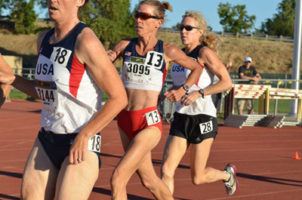When Structure Affects Performance
Athletes have a special kind of mindset. I know. I’ve lived it. You eat, breathe and sleep your sport. Everything in your life revolves around it: your body, your training cycles, your events. You swallow your pain, you work through your challenges, you push boundaries until you reach the goals you’ve set for yourself. You tap into that inner strength, that indomitable will to continue against all odds. And then you set the bar higher, reaching for loftier goals. It never stops. You never stop. Always reaching for better.
But have you ever reached for one of those lofty goals, and found that it took more physical energy than you ever imagined it could? That it took more energy than you could reasonably have expected, based on the training up to that point? Have you worked toward new heights, only to repeatedly hit an invisible wall before you got there? Injuries, less than inspiring performances, fatigue, pain, inefficiencies: sometimes these things come about as a result of poor technique, inconsistent training, insufficient recovery periods, miscalculated training periodization. But sometimes, in fact a LOT of the time, the problems come up as a result of problems in your structural support; the foundation upon which all your technique and conditioning rests. Is the architecture of your body handling the load you’re putting on it? Are the stresses balanced, or pulling in all the wrong directions? Are you gradually loading and over-loading your body to the point of collapse? MORE is not always better.
“I’m an athlete, I’m in great shape, I don’t need to worry about this.”
I hate to burst your bubble, but athletes are master compensators, and probably have more sophisticated and deeply ingrained failed load transfer patterns in their movement than non-athletes. But because you are used to doing whatever it takes to get the job done, you push through – adding power to those faulty patterns, working “around” the problem. Other muscles and tissues take on the job, and your structure literally shifts to accommodate the new pattern. You won’t feel it as it’s happening. In fact, at first, your compensation may make things feel BETTER, as it takes stress away from a problem area. But, eventually the cost of your compensations and structural shifts show up as increased energy expenditure, reduced efficiency and diminished range and quality of movement. You have to work harder and spend more time to achieve less. It begins to feel as though you’re losing ground. Accumulated compensations can eventually lead to diminishing performance; to a point where the structure has trouble compensating its way out of pain or injury. You can treat the injuries, you can rest, but until the underlying structural issues are addressed – you’re fighting a losing battle.
But guess what? Structural challenges don’t have to be the end to your story! It takes a little time, and a lot of focus, but you CAN create a more solid, supportive foundation for your movement. Here’s what to do:
Evaluate your posture
Posture isn’t just some frou-frou aesthetic concept. Your posture will give you a fairly accurate reading of where your body is well supported, and where it’s not. When you look face on into a full-length mirror, what do you see? One shoulder higher than the other? One hip higher than the other? One side of your body (armpit to hip) shorter than the other, or twisted? Head off to one side? One knee rotated inward, or both knees knocking? When you look at the mirror with your body facing the side, imagine a plumb line traveling down from your ear to the side of your shoulder, to the side of your hip, knee and outside “ankle bone.” Is that plumb line hanging straight down, or are there kinks in the way it hangs? Is your head forward of the plumb line, are your shoulders behind it? What do you see? Any significant deviation from an easy plumb line can translate into challenges for the body in motion.
How do you stack up? Posture is not the be all and end all. But it is typically a pretty good indicator of when things are organizing and integrating well, and when there are things that could be functioning better. And your daily, everyday posture is important too, not just the “posture” or form of your sport. Observe how you support yourself when you’re not involved in your sport. What you do with your body in your “off” time is as important as the hours you spend in training.
Train your Structural Support as Fully as You Train Technique/Conditioning
Will you feel the burn? Likely not. Will you be riding the edge or blowing through boundaries with this kind of training? No. You won’t. Will you be dripping in sweat? Probably not. Much of the work of training the structure in a new way is training the brain and the nervous system to communicate with your body in a new way. It’s like learning a new language. At first it may feel more like mental gymnastics than anything else. But spending time training effective and efficient motor control throughout your body will make it possible for you to push those boundaries you love to push with confidence and with a much higher probability of success! Once you’ve got that support, you can add load, range of motion, velocity and all kinds of things to your structure, knowing that you have the stuff underneath to integrate it into efficient motion.
 When you achieve a balance between the support of your structure and the load demand of your physical activities, the body thrives. You’ll achieve more with less effort. Your range of motion will increase. You’ll begin to enjoy the fruits of your labour in other areas of your training. The new ease you feel in moving will give you “more in the tank” than you ever imagined possible. It’s like finding a whole new gear. Instead of just throwing more muscle at stuff, you can work intelligently to find power from a more efficient place in your body. Training can be FUN again!
When you achieve a balance between the support of your structure and the load demand of your physical activities, the body thrives. You’ll achieve more with less effort. Your range of motion will increase. You’ll begin to enjoy the fruits of your labour in other areas of your training. The new ease you feel in moving will give you “more in the tank” than you ever imagined possible. It’s like finding a whole new gear. Instead of just throwing more muscle at stuff, you can work intelligently to find power from a more efficient place in your body. Training can be FUN again!
You may not be ready to hear this yet. I know. I’ve been there too. You figure if you just train harder, you’ll find a way. You just have to tweak your technique a little, right? Maybe. But if you get to a point where you’re experiencing pain or dysfunction that affects performance, why not open the door on the possibility that a different approach could be what’s needed?
When you’re ready to explore the kind of training that provides fundamental structural support as part of the process, check out Moving Spirit’s Pilates & Integrated Movement Programs. Private training and small group classes, mat works and specialty workshops – we’ve got something for everyone. Enroll now in one of our monthly small group reformer memberships, and get your FIRST MONTH FREE! (Some conditions apply. Offer expires Oct 31, 2020)
Check out Getting Started with Us for more details.
We’re ready to welcome you into a new relationship with your body in motion.
Book an Introductory Private Training Appointment Here.
 About Susannah Steers
About Susannah Steers
Susannah is a Pilates and Integrated Movement Specialist, and owner of Moving Spirit. Through movement teaching, speaking, and workshop facilitation, she supports people in creating movement practices that promote fitness and ignite vitality, creativity and connection. She is co-host of The Small Conversations for a Better World Podcast.
If you liked this article, here are a few more that you might find useful:
How Your Movement Patterns Affect Performance and What You Can Do About It
8 Steps To Integrating the Core: There’s More To It Than Muscle!
